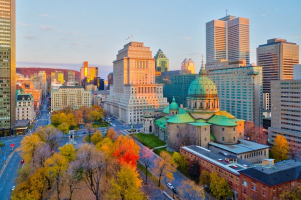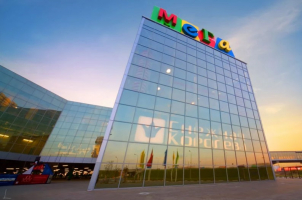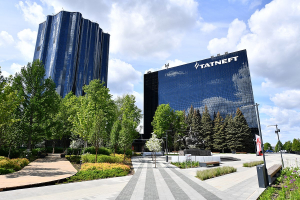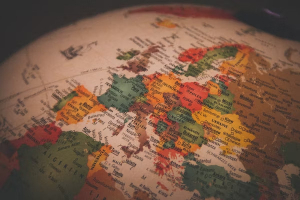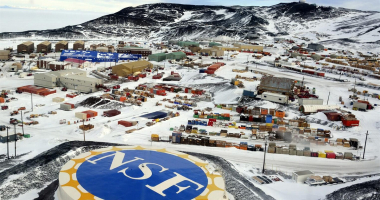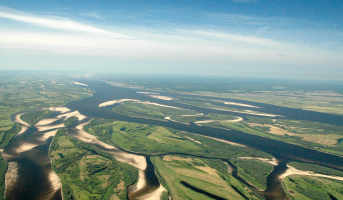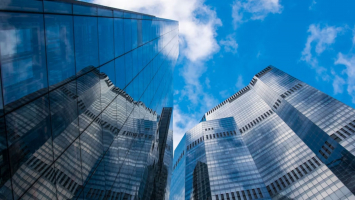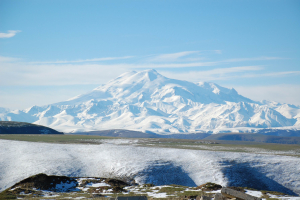Top 15 Largest Cities in Russia by Population
Russia is the most populous nation in Europe and the ninth most populous nation overall, with a population of around 145,952,314. Major cities like Moscow and ... read more...St. Petersburg, which are located in the European portion of Russia, are home to the great majority of their citizens. Russia truly stretches from Eastern Europe to the Pacific Ocean and boasts the biggest land area of any nation on Earth. Russia is a transcontinental nation, with 23% of its land area in Europe and 77% of its land area in Asia. Today, let's follow Toplist to discover the largest cities in Russia by population.
-
Russia's capital and largest city is Moscow. With an estimated 12.4 million people living inside the city borders, over 17 million people living in the urban area, and over 20 million people living in the metropolitan area, the city is located on the Moskva River in Central Russia. The urban area is 5,891 square kilometers (2,275 sq mi), the metropolitan region is about 26,000 square kilometers, and the city is 2,511 square kilometers (970 sq mi) in size (10,000 sq mi). Being the most populous city in all of Europe, the largest urban and metropolitan region in Europe, and the largest city by land area on the continent of Europe, Moscow is one of the largest cities in the globe.
Moscow, which was first mentioned in 1147, developed into a great city that served as the seat of the Grand Duchy that bore its name. Moscow continued to be the political and economic hub of Russia for the majority of the Tsardom's history even after the Grand Duchy of Moscow transformed into the Tsardom of Russia. The capital was transferred from Moscow to Saint Petersburg when the Russian Empire was founded, which reduced Moscow's power. Following the October Revolution, the capital was moved back to Moscow, and the city once again served as the political hub of the Russian SFSR and then the Soviet Union. Moscow remained the capital of the modern, recently formed Russian Federation following the collapse of the Soviet Union.
Due to the presence of its numerous museums, academic and political institutions, and theaters, Moscow, which serves as the historical center of Russia, is home to many Russian artists, scientists, and sports leaders. Numerous UNESCO World Heritage Sites may be found in the city, which is also well renowned for its display of Russian architecture, including the ancient Red Square, Saint Basil's Cathedral, and the Moscow Kremlin, which houses the seat of the Russian government. There are many Russian businesses in Moscow, which is served by a vast transportation network that includes four international airports, ten rail terminals, a tramway, a monorail system, and most notably the Moscow Metro, one of the biggest rapid transit networks in the world and the busiest metro in Europe. The city is among the greenest in Europe and the entire world because more than 40% of its area is covered with vegetation.
Population - 2021: 12,655,050
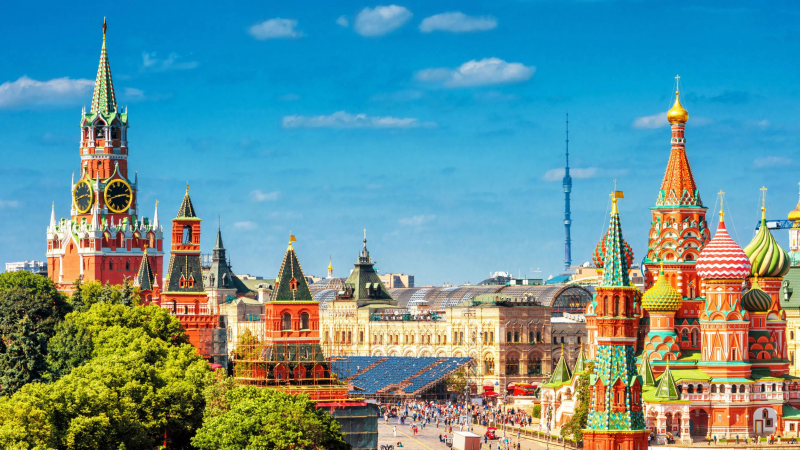
Photo: wikipedia 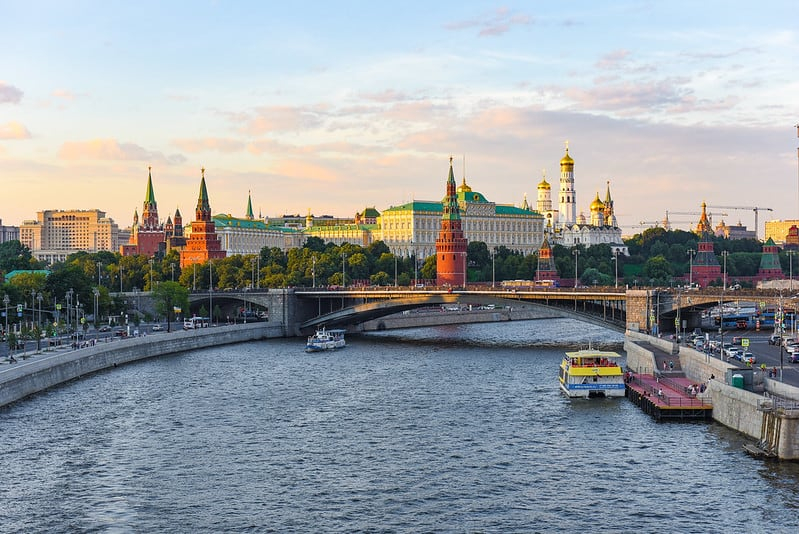
Photo: vn.alongwalker.co -
One of the largest cities in Russia by population is Saint Petersburg, formerly known as Petrograd (1914–1924) and Leningrad (1924–1991). With a population of about 5.4 million, it is located on the Neva River at the head of the Gulf of Finland on the Baltic Sea. With almost a million inhabitants, Saint Petersburg is the world's most northern metropolis, the most populous city on the Baltic Sea, and the fourth most populous city in all of Europe. It is managed as a federal city and served as the Imperial Capital of Russia as well as a historically significant port.
In honor of the apostle Saint Peter, the city was established by Tsar Peter the Great on May 27, 1703, on the site of a Swedish fortification that had been seized. Saint Petersburg in Russia is historically and culturally linked to the founding of the Russian Empire and the country's emergence as a major player in modern history. From 1713 to 1918, it served as the seat of the Russian Tsardom and the ensuing Russian Empire (being replaced by Moscow for a short period of time between 1728 and 1730). The Bolsheviks relocated to Moscow after the 1917 October Revolution.
It is regarded as a significant center for Russia and Europe's economies, sciences, and tourism. The city is known as "the Northern Capital of Russia" in contemporary times and is the location of illustrious federal government institutions like the Russian Constitutional Court and the Heraldic Council of the President of the Russian Federation. The Russian Navy's headquarters and the Western Military District of the Russian Armed Forces are also located there, along with the National Library of Russia and a future site for the Supreme Court of Russia. A UNESCO World Heritage Site is made up of the Historic Center of Saint Petersburg and Related Groups of Monuments. The Hermitage, one of the biggest art museums in the world, and the Lakhta Center, the tallest building in Europe, are located in Saint Petersburg, which also served as one of the host cities for the 2018 FIFA World Cup and the UEFA Euro 2020.
Population - 2021: 5,384,342
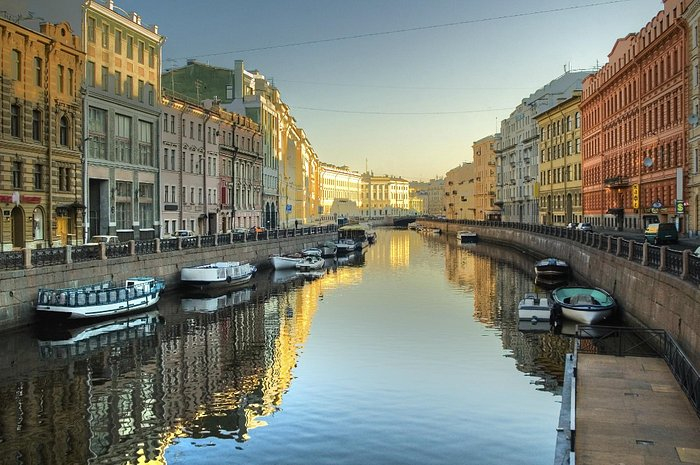
Photo: tripadvisor 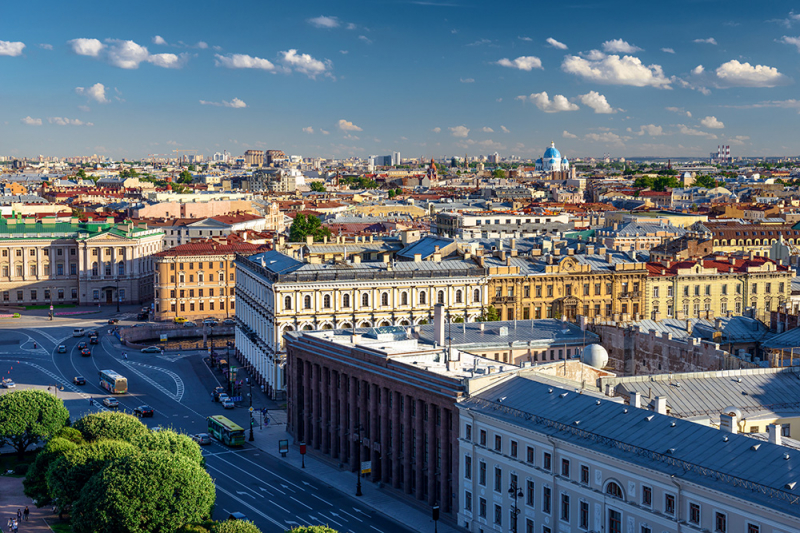
Photo: studyinrussia -
The major city and the seat of government for both Russia's Siberian Federal District and Novosibirsk Oblast is Novosibirsk. With 1,620,162 residents, it was the third-most populous city in Russia and the most populous city in Siberia as of 2021. The city is situated along the banks of the Ob River in southwest Siberia.
On the site of the future Trans-Siberian Railway's Ob River crossing, where the Novosibirsk Rail Bridge was built, Novosibirsk was established in 1893. The city, which was first known as Novonikolayevsk, quickly became into a significant transportation, business, and industrial hub. The Russian Civil War devastated the city, although it rebounded during the early Soviet era and took on its current name in 1926. Novosibirsk rose to prominence as one of Siberia's main industrial hubs under the direction of Joseph Stalin. The city received a large number of factories that were evacuated from the Russian center after the start of World War II.
Numerous Russian businesses, the neo-Byzantine Alexander Nevsky Cathedral, the Novosibirsk Opera and Ballet Theatre, and the famed Novosibirsk Zoo are all located in Novosibirsk. The busiest airport in Siberia, Tolmachevo Airport, serves it.
Population - 2021: 1,620,162
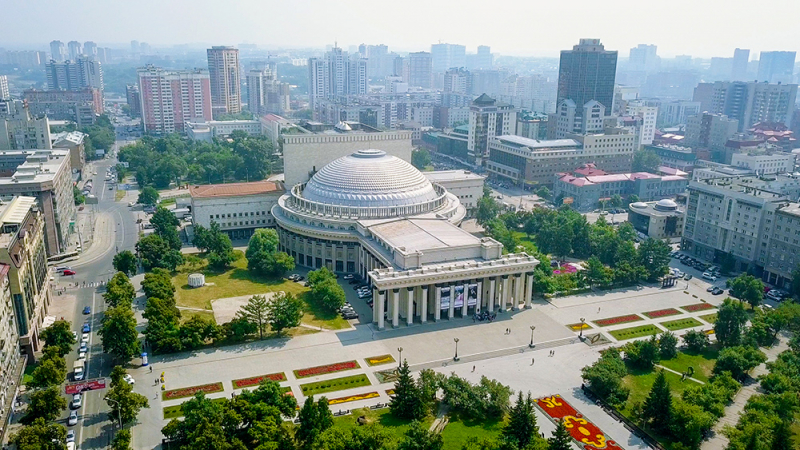
Photo: studyinrussia 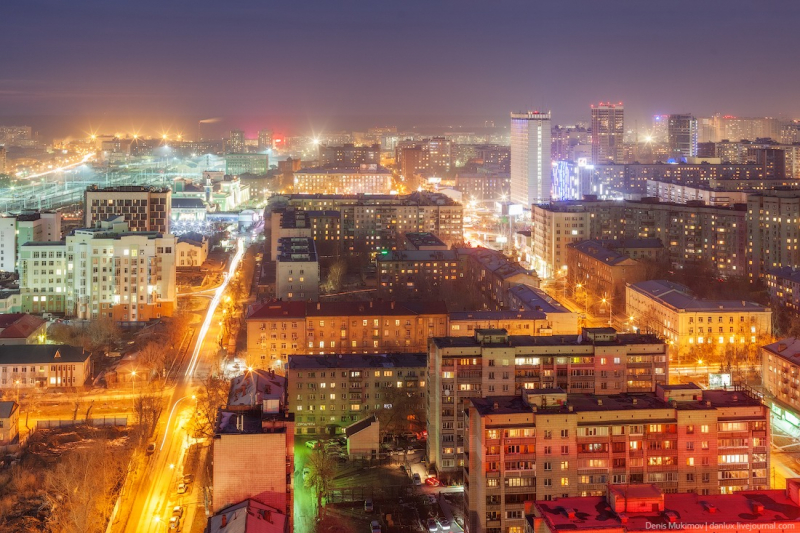
Photo: gody -
The administrative hub of Russia's Ural Federal District and Sverdlovsk Oblast is Yekaterinburg, which is also the region's largest city. The city is located on the Iset River between the Volga-Ural region and Siberia, with a population of roughly 1.5 million residents, up to 2.2 million residents in the urban agglomeration. Yekaterinburg is the largest city in the Ural Federal District, the fourth-largest city in Russia, and one of the country's major industrial and cultural hubs. Yekaterinburg, which is ranked third in terms of its economics, culture, transportation, and tourism, has been dubbed the "Third Capital of Russia."
Yekaterina, which is the Russian form of her name, was the wife of the Russian monarch Peter the Great, who became Catherine I after his death. Yekaterinburg was established on November 18, 1723, and was given that name. Yekaterinburg, one of the most significant industrial hubs in Russia, served as one of the FIFA World Cup's host cities in 2018. As a result of the city's recent economic and demographic development, several of Russia's highest skyscrapers are now situated there. Yekaterinburg, which will host the 2023 Summer Universiade, is home to the presidium of the Ural Branch of the Russian Academy of Sciences and the Central Military District of the Russian Armed Forces headquarters.
Along with New York, Tokyo, Stockholm, and Paris, the city on the border of Europe and Asia are listed by UNESCO as one of the world's top 12 ideal cities because of its rich historical and cultural background and vibrant, eclectic architectural style.
Population - 2021: 1,495,066
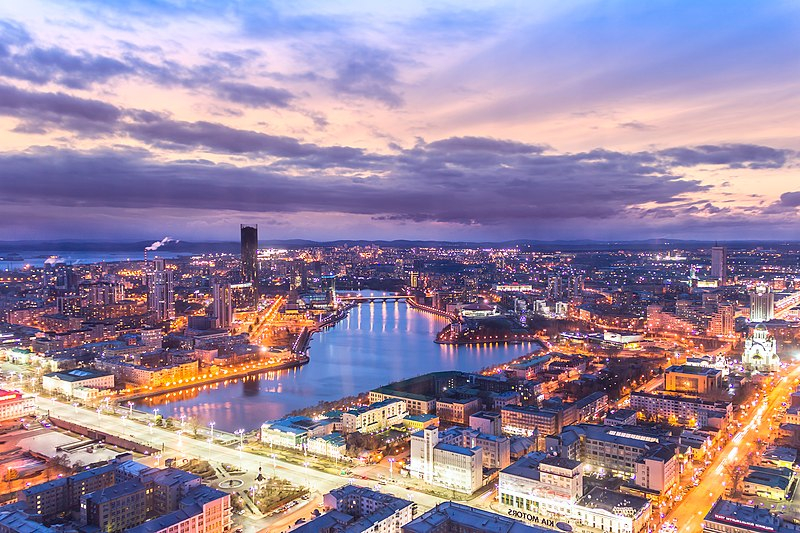
Photo: wikidata 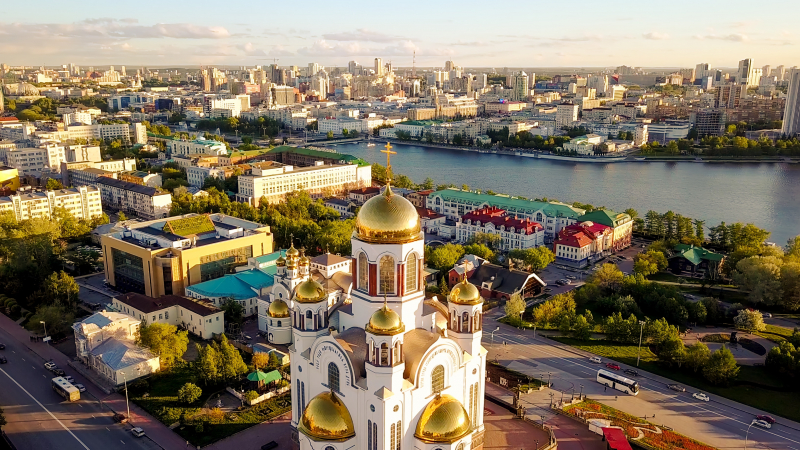
Photo: attenvo -
The Republic of Tatarstan is located in Russia, and Kazan is both its capital and largest city. With a total area of 425.3 square kilometers (164.2 square miles), the city is located at the meeting point of the Volga and Kazanka rivers. It has a population of about 1.2 million people, with the urban agglomeration housing up to over 1.6 million people. It is the most populated city on the Volga and one of the largest cities in Russia by population.
Kazan became the seat of the Kazan Khanate in 1438. Ivan the Terrible seized Kazan in 1552, and it afterwards joined Russia. During Pugachev's Rebellion in 1773–1775, the city was taken over and largely destroyed, but it was eventually rebuilt under Catherine the Great. In the centuries that followed, Kazan expanded to become a significant industrial, cultural, and religious hub of Russia. Kazan was designated as the Tatar ASSR's capital in 1920, following the Russian SFSR's integration into the Soviet Union. Kazan remained the Republic of Tatarstan's capital following the collapse of the Soviet Union.The colorful fusion of Tatar and Russian cultures is well known about Kazan. 1.5 million people visited the Kazan Kremlin, a World Heritage Site, during the 2.1 million tourists who traveled to Kazan in 2015. Kazan was given permission by the Russian Patent Office in April 2009 to call itself the "Third Capital of Russia." It was selected as the "Sports capital of Russia" in 2009, and that designation is being used today. The 2018 FIFA World Cup was held in Kazan, which was also one of the locations hosting the 2013 Summer Universiade.
Population - 2021: 1,257,341
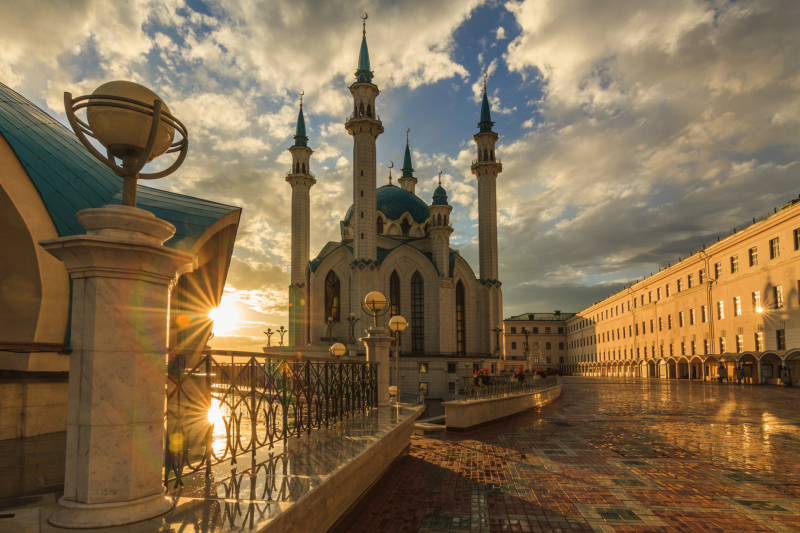
Photo: newlinesmag 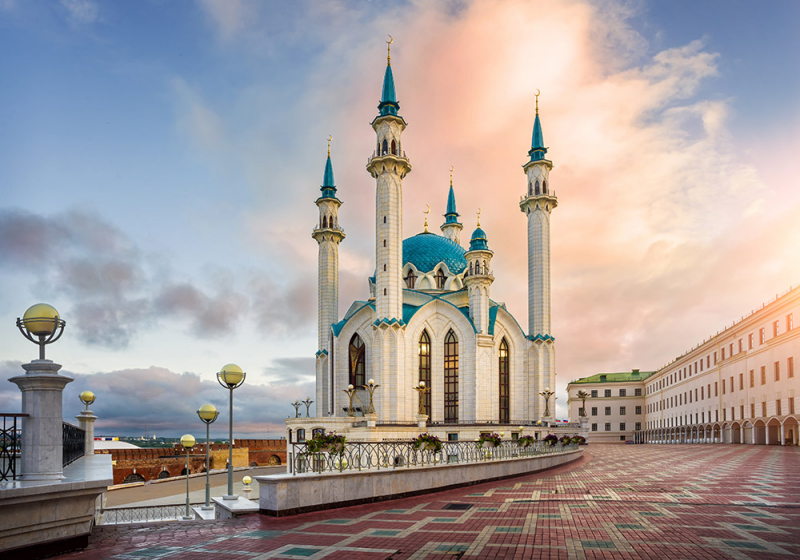
Photo: studyinrussia -
The administrative hub of Nizhny Novgorod Oblast and the Volga Federal District is Nizhny Novgorod, also known as Nizhny, and was formerly known as Gorky (оpки) (1932–1990). It was known as Novgorod of the Lower Land from the 13th to the 17th century. The city has a population of approximately 1.2 million people, with the urban agglomeration housing up to over 1.7 million people in Central Russia, where it is situated at the meeting point of the Oka and Volga rivers. The Volga Federal District and the second-most populated city on the Volga are both located in Nizhny Novgorod, the sixth-largest city in Russia. It serves as the principal hub for river tourism in Russia and is a significant economic, transportation, scientific, educational, and cultural hub for the enormous Volga-Vyatka economic region. There are numerous universities, theaters, museums, and cathedrals in the city's historic district.
Prince Yuri II of Vladimir built the city on February 4, 1221. Kuzma Minin and Prince Dmitry Pozharsky assembled an army in 1612 to free Moscow and the rest of Russia from Lithuanian and Polish rule. Nizhny Novgorod rose to prominence as a major Russian Empire trading hub in 1817. An All-Russia Exhibition was planned for a fair in 1896. The city developed into an important industrial hub during the Soviet era. During this time, the Gorky Automobile Plant in particular, was built. Then, the name "Russian Detroit" was given to the city. The city was renamed Nizhny Novgorod once more just before the Soviet Union disintegrated. The Nizhny Novgorod Metro was inaugurated in 1985. The Almaz-Antey Air and Space Defence Corporation's new 70th Anniversary of Victory Plant was inaugurated by Vladimir Putin in 2016.
Population - 2021: 1,244,254
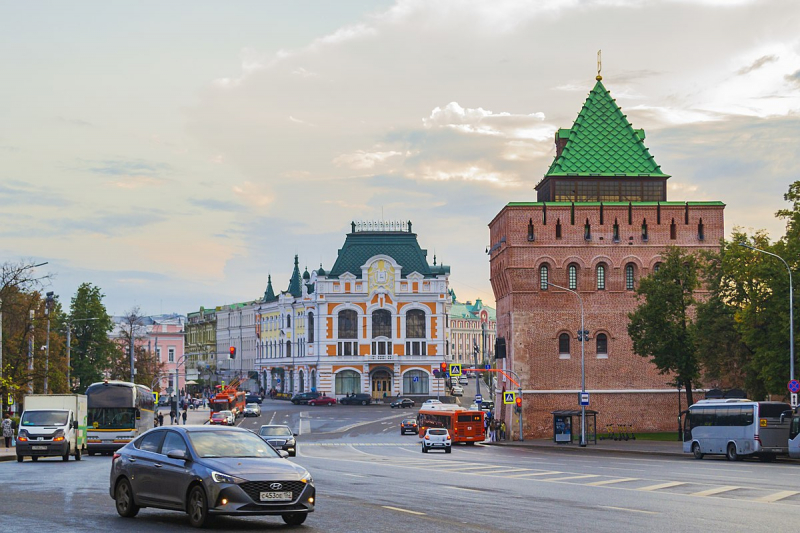
Photo: wikipedia 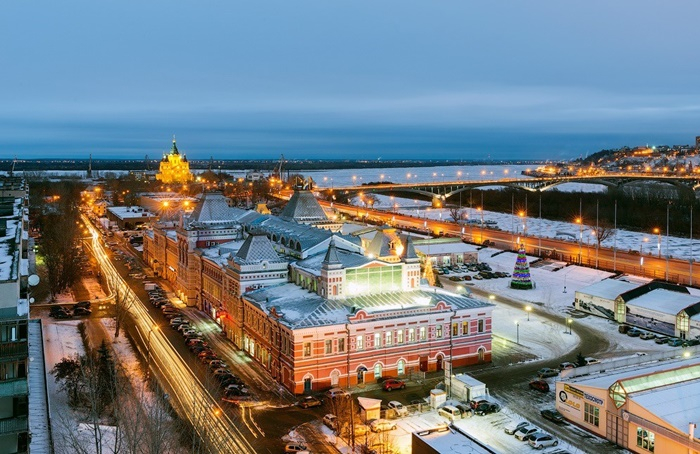
Photo: dulichvietnam -
The capital and largest city of Chelyabinsk Oblast, Russia, is Chelyabinsk. With a population of over a million, it is the second-largest city in the Ural Federal District, behind Yekaterinburg, and the seventh-largest city in all of Russia. East of the Ural Mountains, along the Miass River, is Chelyabinsk.
The prehistoric city of Arkaim, which belonged to the Sintashta civilization, was located in the Chelyabinsk region. On the location of a Bashkir settlement, Chelyaba, a stronghold, was built in 1736. By 1787, Chelyabinsk had received town status. By the early 20th century, Chelyabinsk had started to expand quickly as a result of the building of railway connections between the Russian interior and Siberia, particularly the Trans-Siberian Railway. By 1917, it had 70,000 residents. Chelyabinsk developed into a significant industrial hub under the Soviet Union in the 1930s. Built-in 1933, the Chelyabinsk Tractor Plant. The city played a significant role in the production of tanks and ammunition during World War II.
Chelyabinsk continues to be a significant industrial hub, particularly in heavy industries like metallurgy and military manufacturing. In particular, South Ural State University and Chelyabinsk State University are among the many educational institutions that call it home.
Population - 2021: 1,187,960
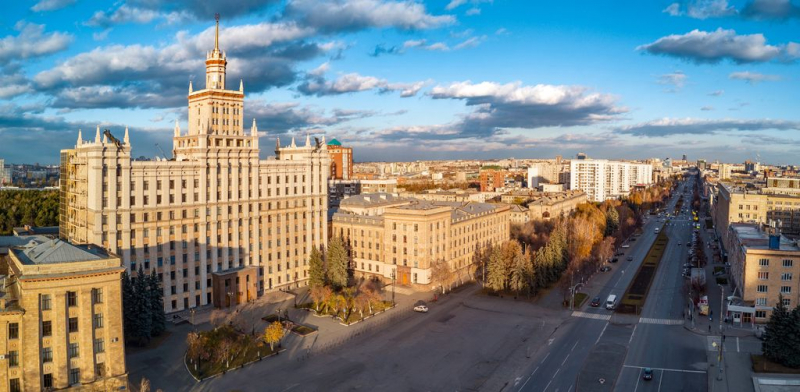
Photo: 12go 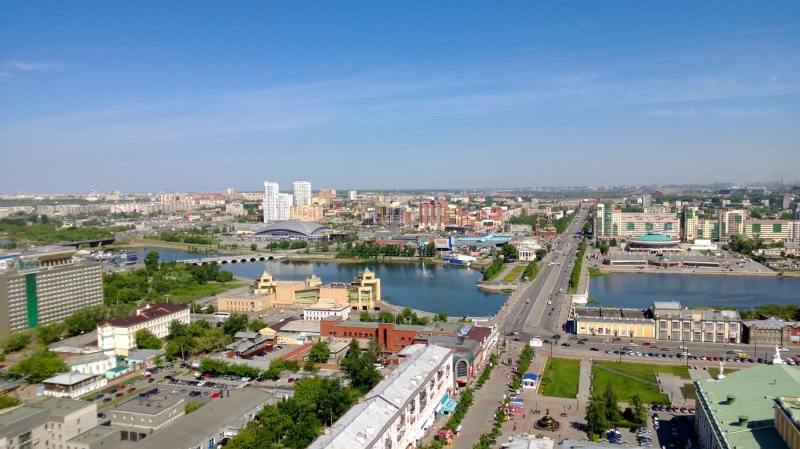
Photo: kayak -
The capital of Samara Oblast and its major city is Samara. Including Novokuybyshevsk, which is not a conurbation, the city has a population of about 1.14 million people and up to 1.22 million in the urban agglomeration. The city is situated at the junction of the Volga and Samara rivers. The third-most populous city on the Volga and the Volga Federal District, the city has a total area of 541.382 square kilometers (209.029 sq mi), making it the eighth-largest city in Russia and the tenth agglomeration.
Previously a fortified city, Samara is now a sizable and significant social, political, economic, industrial, and cultural hub in Russia. In May 2007, it served as the venue for the European Union-Russia Summit. With hot summers and chilly winters, it has a continental climate. The Volga River, which has been Russia's principal trade route for centuries and is also quite attractive to the eye, has long played a central role in Samara residents' daily lives. One of the most popular recreational areas in Samara for both locals and visitors is the riverbank.
Population - 2021: 1,144,759
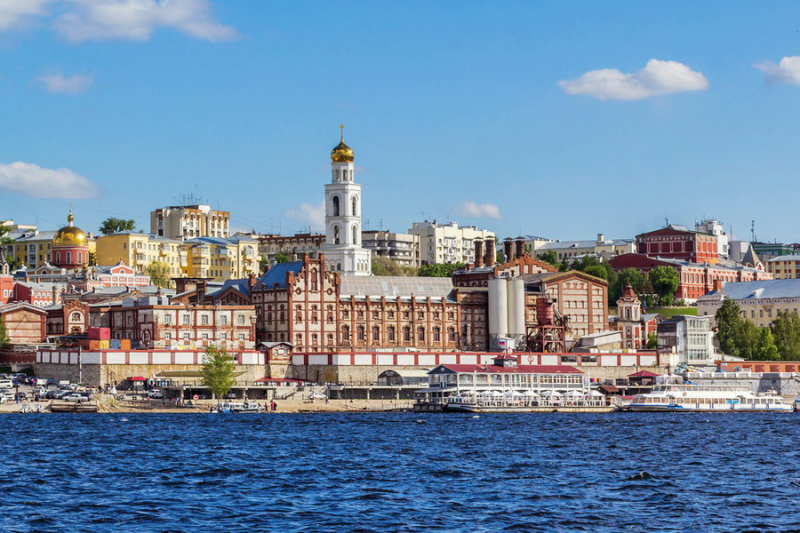
Photo: advantour 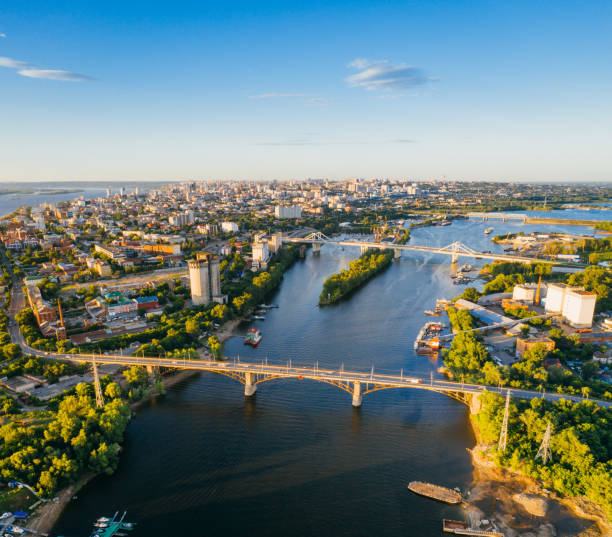
Photo: istock -
The capital and largest city of Omsk Oblast, Russia, is Omsk. It has a population of more than 1 million and is located in the southwest of Siberia. After Novosibirsk, Omsk is the second-largest city in Siberia and one of the largest cities in Russia by population. It is a crucial transportation hub that serves as both a Trans-Siberian Railway train station and a staging area for the Irtysh River.
Omsk served as the residence of the Governor General of Western Siberia and, later, the Governor General of the Steppes during the Imperial Empire. It briefly functioned as the anti-Bolshevik Russian State's capital during the Russian Civil War in 1918–1920 and housed the imperial gold reserves.
The administrative headquarters of the Siberian Imam is located in Omsk, which also acts as the episcopal see for the bishop of Omsk and Tara. Sergey Shelest serves as mayor.
Population - 2021: 1,139,897
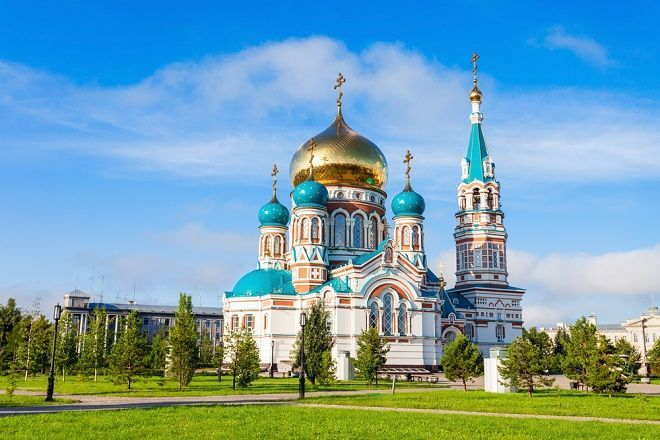
Photo: anotherrussia 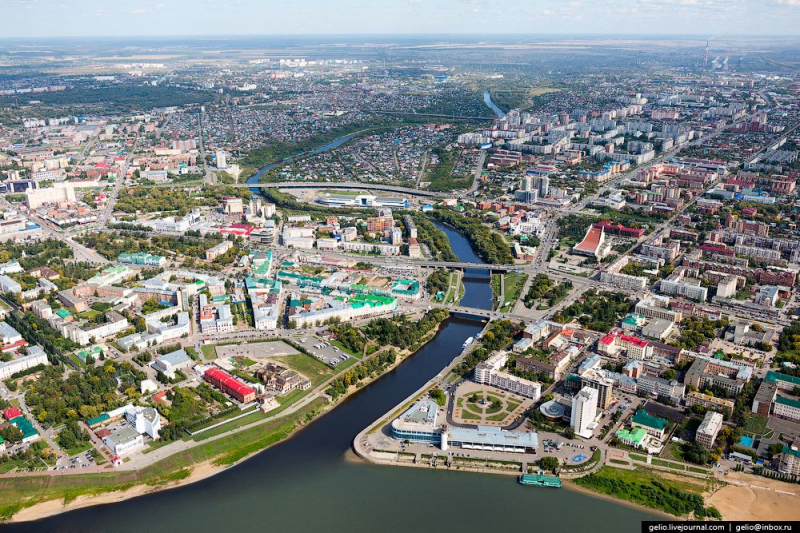
Photo: russiatrek -
In addition to serving as the administrative hub for Rostov Oblast and Russia's Southern Federal District, Rostov-on-Don is a port city. It is located 32 kilometers (20 miles) from the Sea of Azov, on the Don River, in the southeasterly region of the East European Plain, straight to the north of the North Caucasus. The Don river delta is above the city's southwest suburbs. With a population of over a million, Rostov-on-Don is a significant cultural hub of Southern Russia.
The region near the Don River's mouth has been significant culturally and economically since antiquity. The Scythian and Sarmatian tribes were among the original occupants of the area. It was the location of the ancient Greek settlement Tanais, Fort Tana during the Genoese occupation, and Fort Azak during the Ottoman Empire.
Rostov's advantageous location at a commercial intersection encourages economic growth. A significant maritime route linking Russia's southwest and north is the Don River. Russian, Italian, Greek, and Turkish traders sell commodities like wool, wheat, and oil from Rostov-on-Don. Additionally, it serves as a significant passenger river port. One-third of Russia's vegetable oil is produced in the Rostov-on-Don agricultural region from sunflowers.Population - 2021: 1,137,704
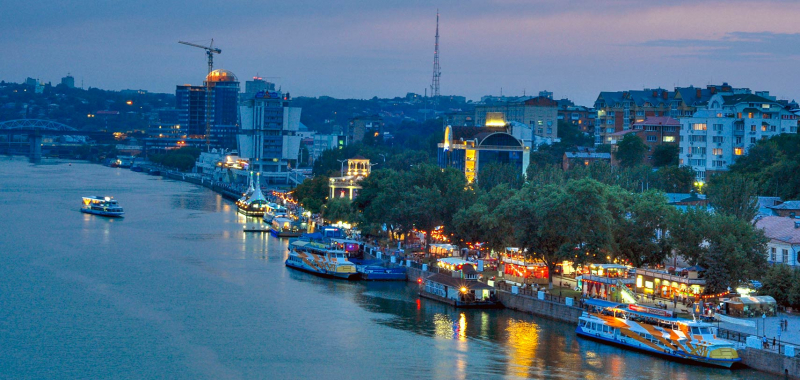
Photo: nationsonline 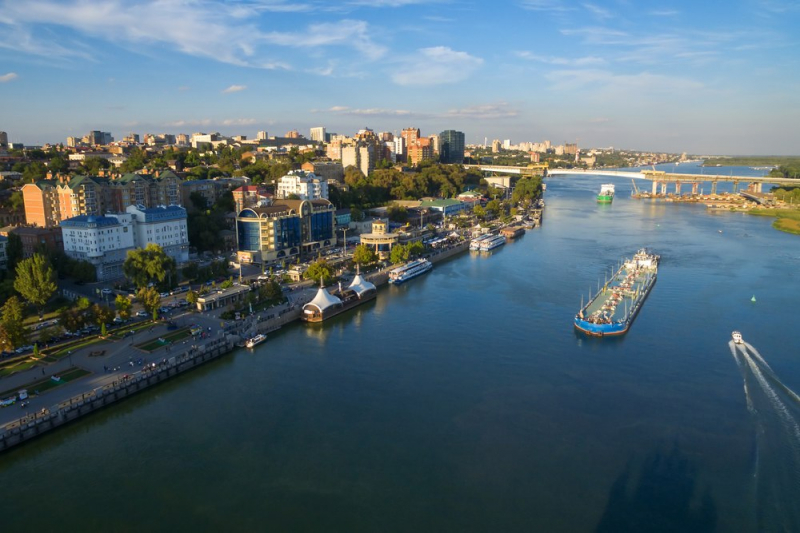
Photo: blog.radissonblu -
The largest capital of the Russian Republic of Bashkortostan is Ufa. The city, which has a population of over 1 million people and as many as 1.4 million people in the urban agglomeration, is located at the junction of the Belaya and Ufa rivers in the center-north of Bashkortostan on hills that make up the Ufa Plateau to the west of the southern Ural Mountains. Ufa is the fourth-most populated city in the Volga Federal District and one of the largest cities in Russia by population.
Ivan the Terrible's command to construct a fortification on the city's foundation in 1574 is regarded as the year the city was officially formed. When the governorate split from Orenburg Governorate in 1865, Ufa became the new governorate's seat. The early 20th century saw an increase in Ufa's population.
The oil refining, chemical, and mechanical engineering sectors make up the majority of Ufa's economy today. The petroleum firm Bashneft and several of its subsidiaries have their headquarters here. Ufa is a multicultural city with a large ethnic Russian population, as well as a sizable ethnic Bashkir and Tatar population. Bashkir State University, Ufa State Aviation Technical University, Ufa State Petroleum Technological University, and Ural State Law University are only a few of the educational institutions in Ufa. In 2015, the city played home to various BRICS and Shanghai Cooperation Organization summits.Population - 2021: 1,125,933
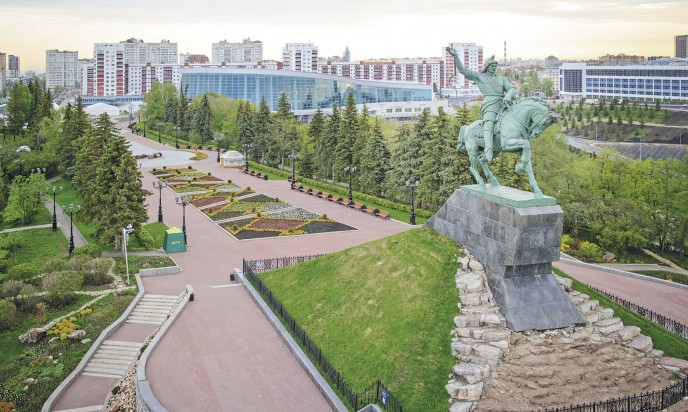
Photo: uil.unesco.org 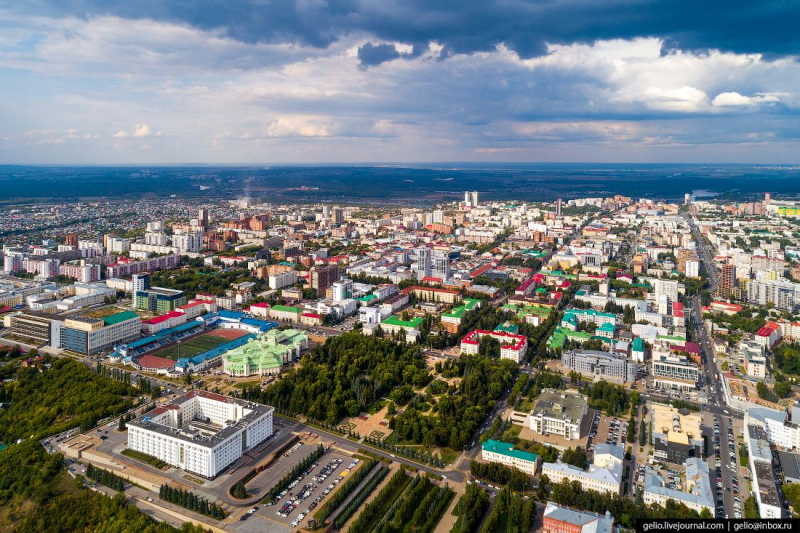
Photo: russiatrek -
The largest city and the seat of government for Krasnoyarsk Krai is Krasnoyarsk. With a population of more than a million, it is the third-largest city in Siberia after Novosibirsk and Omsk and is located along the Yenisey River. Krasnoyarsk is one of the biggest aluminum producers in the nation and a significant intersection of the legendary Trans-Siberian Railway.
Author Anton Chekhov deemed Krasnoyarsk to be the most attractive city in Siberia due to the area's natural beauty. Located 10 kilometers south of the city is the Stolby Nature Sanctuary. Siberian Federal University is located in Krasnoyarsk, a significant Siberian educational hub. The third Winter Universiade to be held in Russia was held in 2019 in Krasnoyarsk.
The vast national nature reserve Stolby ("pillars"), which spans an area of 470 km2 (180 sq mi) and contains various enormous granite rock formations up to 100 meters high, many of which have highly unusual features, is the most visited tourist destination in Krasnoyarsk. A popular rock climbing location is Stolby. Many local climbers refer to their extreme sport as stolbizm, sometimes known as solo climbing, and purposefully do not utilize any belaying equipment. The Krasnoyarsk Hydroelectric Power Station dam, the Karaulnaya Gora hill with the Paraskeva Pyatnitsa Chapel, museums, theaters, etc. are some more well-known attractions.
Population - 2021: 1,092,851
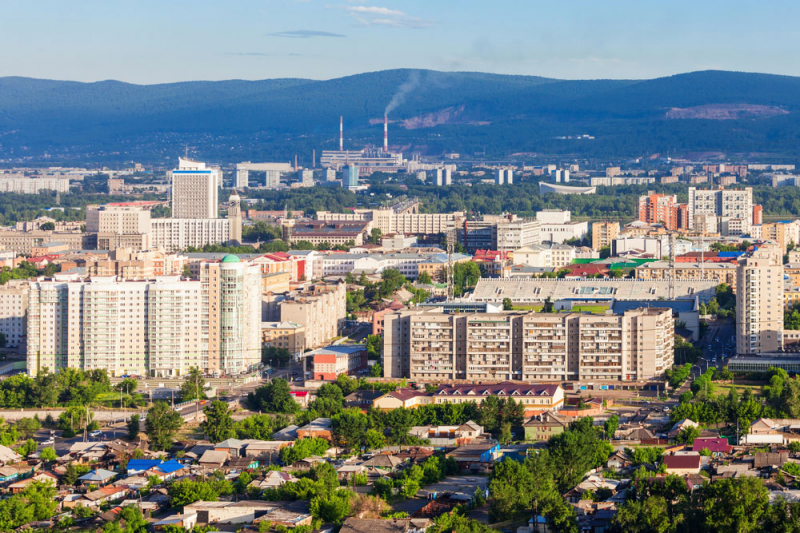
Photo: collinsdictionary 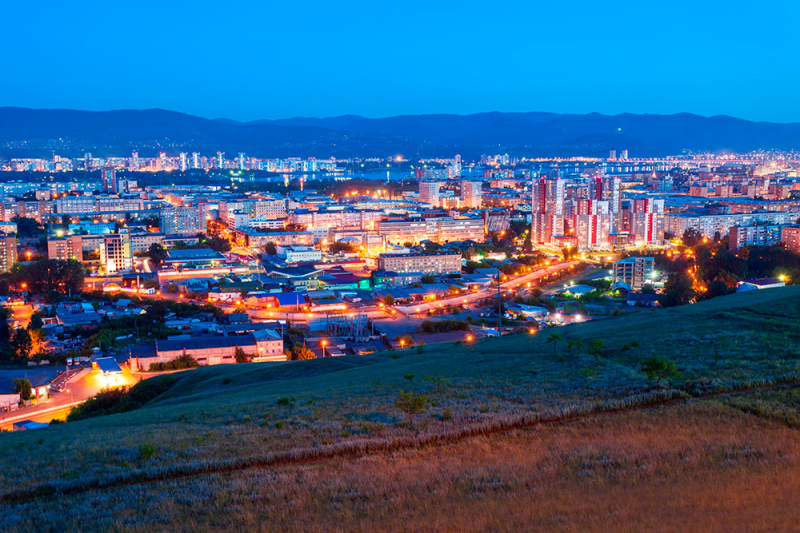
Photo:studyinrussia -
Voronezh is situated 12 kilometers (7.5 miles) from the point where the Voronezh River empties into the Don River and serves as the administrative hub of Voronezh Oblast in southwest Russia. The city is situated alongside the M4 freeway (Moscow-Voronezh-Rostov-on-Don-Novorossiysk), the Southeastern Railway, and the Urals, Siberia, Caucasus, and Ukraine. It was predicted to have 1,058,261 residents in 2020, up from the 889,680 counted in the 2010 Census, making it the thirteenth most populated city in the nation.
The administrative heart of the oblast is Voronezh. It is incorporated as Voronezh Urban Okrug within the framework of administrative divisions—an administrative entity with a status equivalent to that of the districts. This administrative division has urban okrug status in addition to being a municipal division.
Population - 2021: 1,050,602
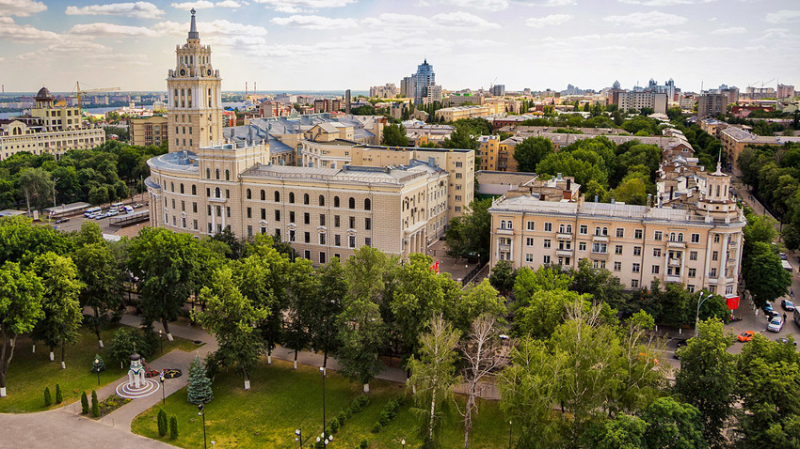
Photo: rbth 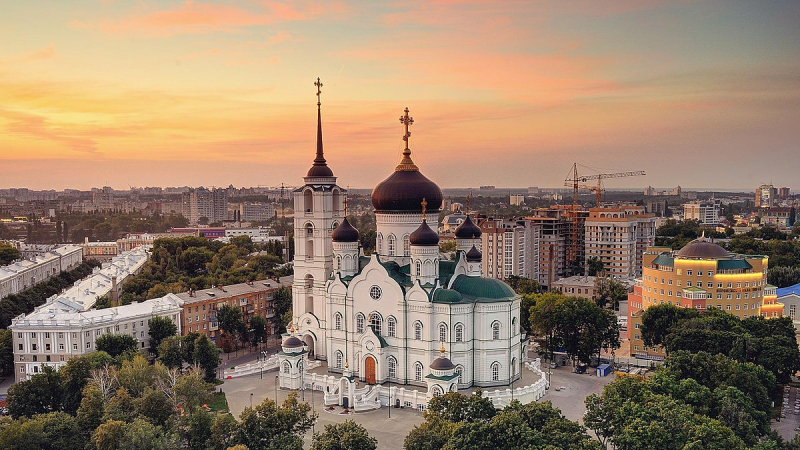
Photo: wikivoyage -
The capital and largest city of Perm Krai is Perm, which is located in Russia. The city, which has a population of more than one million people, is situated on the banks of the Kama River, close to the Ural Mountains. It has a total area of 799.68 square kilometres (308.76 square miles). Perm is the fifth-largest city in the Volga Federal District and the fourteenth-largest city in all of Russia.
In the Yagoshikha settlement, a copper-smelting operation was established in 1723. The village of Yagoshikha was transformed into the town of Perm in 1781. Perm was able to develop into a significant manufacturing and commerce hub thanks to its location on the navigable Kama River, which flows into the Volga, and on the Siberian Route across the Ural Mountains. Additionally, it was near the Trans-Siberian Railroad. During the Soviet era, Perm expanded significantly as industrialization in the Urals progressed, and in 1940 it was given the name Molotov in honor of Vyacheslav Molotov. The city reverted to its former name in 1957.
One of the key industrial hubs of the Urals region and a significant rail hub today is Perm. Equipment and machine tools for the coal and petroleum sectors, as well as agricultural machinery, are produced by the city's diverse metallurgical and engineering businesses. A sizable chemical business in the city produces fertilizers and dyes, using oil that is piped in from the West Siberian oilfields. The Perm A.M. Gorky State University, established in 1916, is one of the city's schools of higher learning.
Population - 2021: 1,049,199
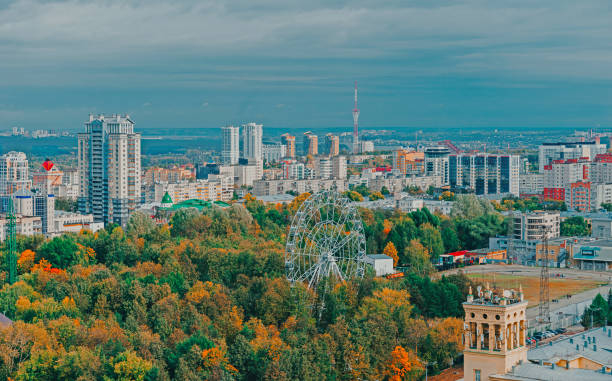
Photo: istock 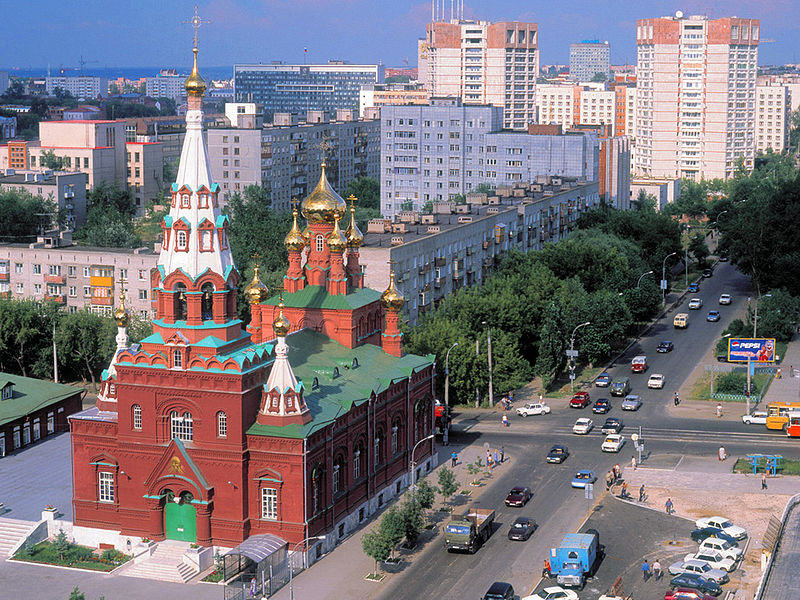
Photo: wikipedia -
The capital and largest city of Russia's Volgograd Oblast is Volgograd. With an area of 859.4 square kilometers (331.8 square miles) and a population of more than 1 million, the city is located on the western bank of the Volga. The second-largest city in the Southern Federal District and the fourth-largest city on the Volga, Volgograd is the fifteenth-largest city in Russia.
In 1589, the town was established as the Tsaritsyn stronghold. Tsaritsyn's population significantly increased as a result of its development into a significant river port and economic hub in the eighteenth century.
In honor of Joseph Stalin, the city was renamed Stalingrad on April 10, 1925. The Battle of Stalingrad, one of the biggest and bloodiest conflicts in military history, occurred when the Axis forces stormed the city during World War II. The city was renamed Volgograd by Nikita Khrushchev's leadership on November 10, 1961. The city became the Volgograd Oblast's administrative hub after the collapse of the Soviet Union.
Volgograd, locally known as the "Hero City," is home to The Motherland Calls, the highest statue in Europe and the tallest statue of a woman in the world. It is an 85-meter-high monument honoring the heroes of the Battle of Stalingrad. Numerous tourist attractions, including museums, sandy beaches, and a self-propelled floating church, can be found in the city. One of the 2018 FIFA World Cup host cities was Volgograd.
Population - 2021: 1,004,763
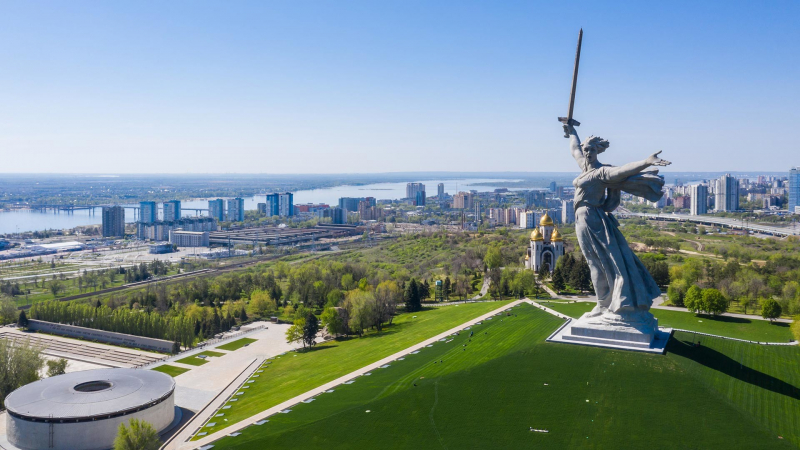
Photo: rbth 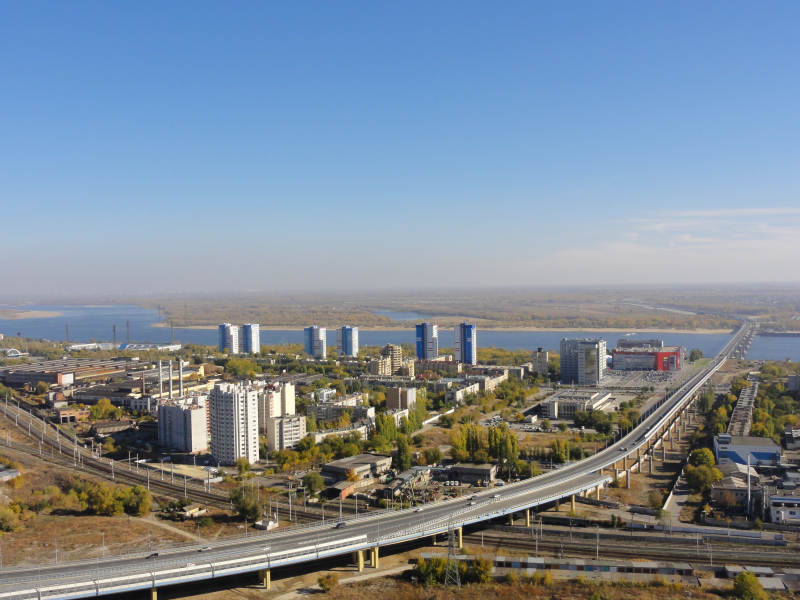
Photo: vistapointe

















